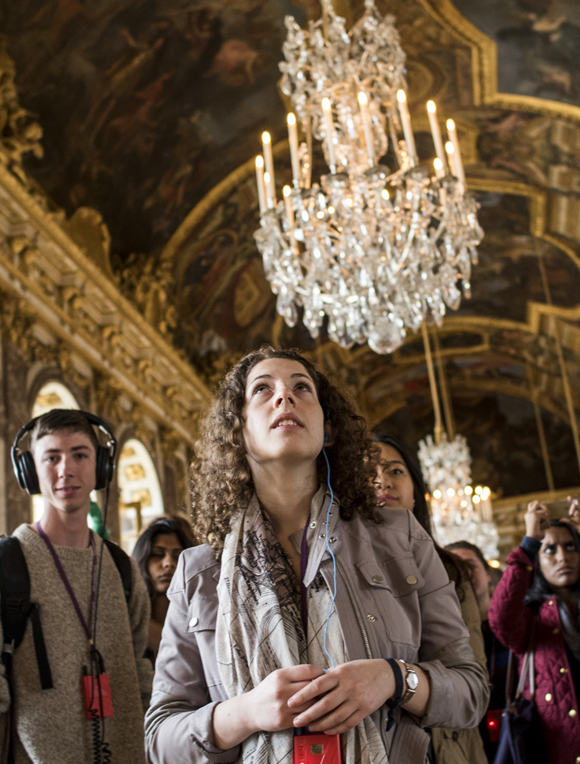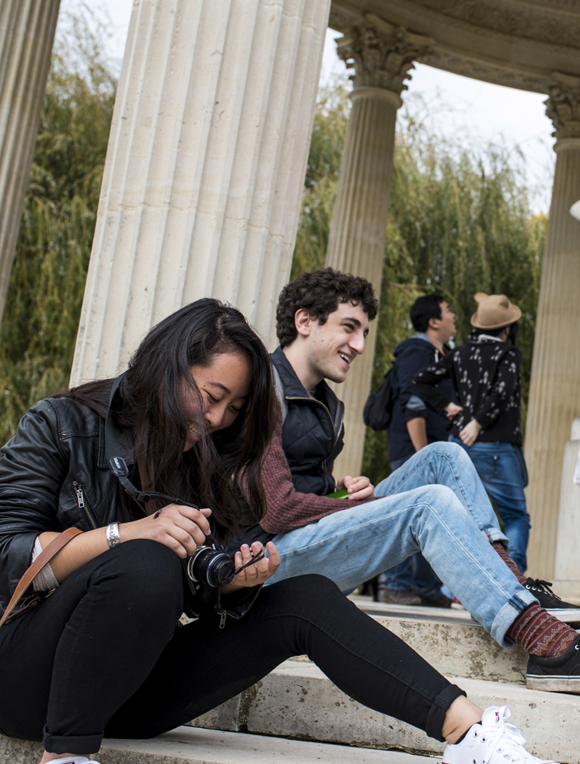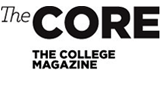
“Qu’ils mangent de la brioche”
At Versailles, European Civilization students get to be kings and queens for a day.
Carrie Golus, AB’91, AM’93
At ten o’clock on a gray Friday morning, the Palace of Versailles is besieged by hundreds upon hundreds of commoners. There’s a group of French children in bright yellow caps; another group wears bright orange. The UChicago students in the European Civ in English program huddle together at the group entrance, looking tired and a little underdressed for the chill.
Friday is excursion day. This Friday, while Civ in English is at Versailles, Civ in French is visiting the Musée de Cluny (a museum of the Middle Ages) as well as a medieval cathedral, the basilique cathédrale de Saint Denis. African Civ is taking a high-speed train to the former slave port of Nantes, 240 miles southwest of Paris. Primates and human evolution will make its excursion to the Vallée des Singes tomorrow (see “Dawn of the Planet of the Apes”).

Martine Davies Frasch, our tiny, unflappable tour guide, passes out red plastic audio guides with one earphone: “Just put them on,” she says in British-accented English. “Don’t change the frequency.” All of the adult groups at Versailles have similar equipment, allowing them to hear their own tour guides, with no yelling required. “It’s incredibly crowded,” Frasch says cheerily, through the headphones. “Just follow along. It’s a bit like the sea.” It’s an apt comparison; the tour groups flow around and through each other, moving inexorably from one room to the next. “Courage!” she says as our group surges into the king’s chapel. “Off we go!”
Inside the chapel, Frasch passes out maps in French; there are also Spanish, Italian, German, Chinese, and Japanese versions, but the English ones have all been taken. “Louis XV couldn’t stand the crowds,” Frasch notes, without irony. “He was much less popular than Louis XIV.”
There’s a bit more space in the vast Hall of Mirrors, where the Treaty of Versailles was signed; the room was planned so that as the sun set, its last rays would be reflected in the mirrors. A Chinese tour guide leads her group around ours, holding aloft a stick topped with a frog puppet wearing a golden crown. We walk through the king’s bedroom (“The seat of royalty wasn’t the throne or a desk, but the bed,” Frasch says) and the queen’s (“She had to give birth publicly, in front of everybody”).
Outside the castle, one UChicago student in a minidress, overcome with joie de vivre, skips along the cobblestones; another, who wore high heels, grips the arms of two companions for support.

Lunch is at La Petite Venise, housed in a former outbuilding, where workers once built and maintained a fleet of miniature ships for Louis XIV. A few students seem flummoxed by the layout of the silverware, with the dessert spoon laid horizontally above the plate. Then the appetizer arrives, a mozzarella tartlet served over tomato and arugula, and the students begin to relax. Two of them snap photos for Instagram. “Bon appétit,” says a third.
After enjoying a lunch of chicken breast, boiled potatoes, and chocolate mousse, the students take in the Petit Trianon and Hameau de la Reine (the Queen’s Hamlet), Marie Antoinette’s faux-pastoral retreat at the edge of Versailles. “That sucks,” one student remarks as we walk through English-style gardens toward the Temple of Love, “to go from here to being decapitated.”
A native of Austria, where court life was much simpler, Marie Antoinette never felt at home in the complex world of Versailles. In the world she had built for herself, there’s a bakehouse, a potager, a dovecote, a willow tunnel—all charmingly rustic. “The mill has apparently never been used,” Frasch says outside a 1783 building labeled Le Moulin. “It’s like a stage set. It looks unreal.” It’s another apt comparison: Hameau de la Reine as the original Euro Disney.
Marie Antoinette was just 14 when she married Louis XVI, Frasch had informed the group as we walked through the gilt-encrusted palace. Now as the students pause to watch some enormously fat rabbits, one woman wonders aloud how old the queen was when she died (she was 37): “I’m trying to gauge how much I want to trade places with her.”
